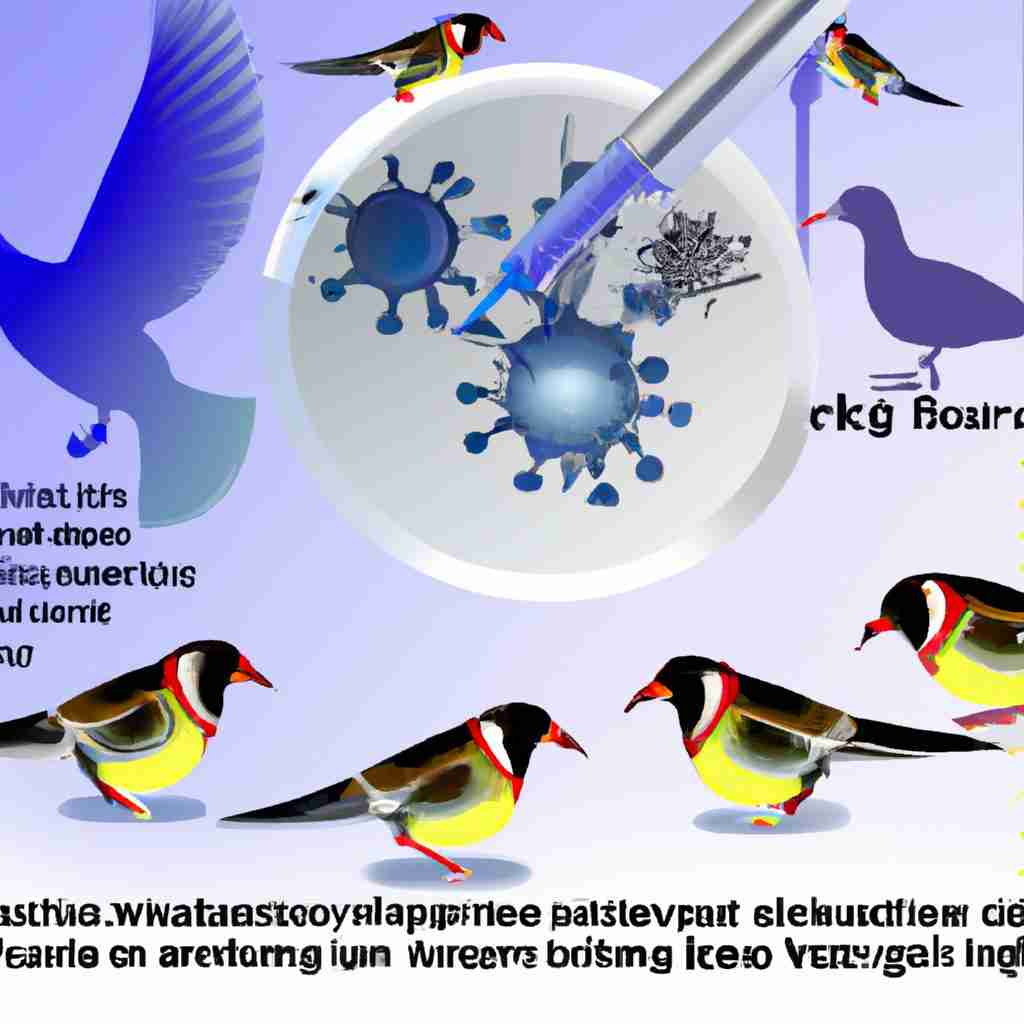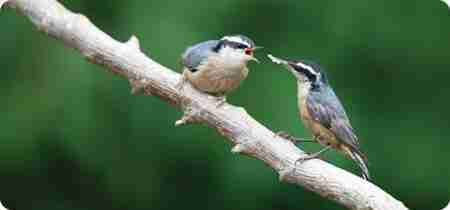[et_pb_section fb_built=”1″ admin_label=”section” _builder_version=”4.16″ global_colors_info=”{}”][et_pb_row admin_label=”row” _builder_version=”4.16″ background_size=”initial” background_position=”top_left” background_repeat=”repeat” global_colors_info=”{}”][et_pb_column type=”4_4″ _builder_version=”4.16″ custom_padding=”|||” global_colors_info=”{}” custom_padding__hover=”|||”][et_pb_text admin_label=”Text” _builder_version=”4.16″ background_size=”initial” background_position=”top_left” background_repeat=”repeat” global_colors_info=”{}”]In a pertinent study recently published in iScience, researchers from the University of Pittsburgh and the National Institutes of Health (NIH) Vaccine Research Center have innovated an advanced method which could accelerate the testing of potential vaccines against bird flu. With the use of a novel animal model and the employment of H5N1 virus through small particle aerosol, their newfound technique delves into the simulation of a more authentic representation of human infection. The study underpins the discovery that a thrice-administered seasonal flu vaccine, combined with an experimental adjuvant, might be influential in evading Acute Respiratory Distress Syndrome (ARDS) upon exposure to the H5N1 virus. This significant breakthrough provides a feasible route for humanity’s protection against bird flu; a promising stride towards swift validation and deployment of novel vaccines, potentially safeguarding us against the dread of a foreseeable pandemic. This substantial evolution in science brings brighter hope in combating bird diseases with potential vaccines.
Overview of the New Vaccine Testing Method
An innovative method, spearheaded by the University of Pittsburgh and National Institutes of Health (NIH) Vaccine Research Center, has been developed to test potential vaccines against bird diseases. These institutes’ concerted effort has led to an approach that significantly advances the evaluation of prospective vaccines, specifically for bird flu.
The Unique Approach by the University of Pittsburgh and NIH researchers
This unique approach is rooted in the development and use of an animal model that closely mirrors the symptoms of human infection. By utilizing macaques, known for their homology in anatomy and physiology to humans, the researchers have established a model that aptly mirrors the disease manifestation in humans.
The Role of the H5N1 Virus and Aerosols in the Method
The crux of this method lies in the introduction of the H5N1 virus via small particle aerosols. This technique was employed to more precisely mimic natural exposure of the virus to potential hosts.
Use of the Macaque Animal Model for the Study
The macaques were a significant component of this study, given their value as an animal model due to their physiological and anatomical similarity with humans. Their use allowed for more accurate indications of how the proposed vaccines might perform in a human body.
Significance of the Study
The study’s significance is underscored by the urgent need for effective bird flu vaccines.
Highlighting the Urgent Need for Effective Bird Flu Vaccines
The necessity for a swift and effective response to bird flu is of paramount importance, given the virus’s potential for cross-species transmission. The creation of potential vaccines against bird diseases, tested with this enhanced method, provides the much-needed answer to this urgent call.
Implication of the Study in Preventing Human-to-Human Bird Flu Transmission
By expediting the creation and testing of potential vaccines against bird diseases, the study contributes potentially to the prevention of human-to-human transmission of avian flu. Given the immense repercussions and devastation of pandemic situations, this preventative aspect is invaluable.
How the Study Propels Forward Validation and Deployment of New Bird Flu Vaccines
The study’s emphasis is more than just discovery; it is about action and the subsequent practical application of those discoveries. This approach underscores the potential for quicker validation and deployment of bird flu vaccines.
Seasonal Flu Vaccine with Adjuvant in the Study
The researchers’ use and evaluation of an adjuvanted seasonal flu vaccine further bolster the study’s magnitude.
Explain the Concept of an Experimental Adjuvant
An adjuvant in this context refers to a compound that fortifies a vaccine’s effectiveness. By enhancing the recipient’s immune response, an adjuvant aids in ensuring that the vaccine achieves maximum efficacy.
Details of Dosage and Frequency
In the study, the subjects received a dose of the seasonal flu vaccine thrice, supplemented with an experimental adjuvant. The precise implementation of dosage and frequency allowed researchers to evaluate the vaccine’s impact against bird flu under specific parameters.
Analysis of the Effectiveness of the Adjuvanted Seasonal Flu Vaccine as a Potential Solution Against Bird Flu
Upon evaluating the results, the researchers found that the adjuvanted seasonal flu vaccine could potentially serve as an effective solution against bird flu. Given the protective effect against H5N1 demonstrated in macaques, these findings bring us closer to a viable option to curb bird flu outbreaks.
Macaques’ Role in the Bird Flu Vaccine Research
The use of macaques in this research proved instrumental in understanding the holistical effect of potential vaccines against bird diseases.
Choice of Macaques Due to Their Similarity in Anatomy and Physiology to Humans
Given the critical role that similar anatomy and physiology can play in vaccine research, the choice of macaques as a model organism for this study was strongly justified.
Reaction of Macaques to Aerosolized H5N1 Virus
Upon exposure to aerosolized H5N1 virus, macaques exhibited symptoms representative of a typical human H5N1 infection, thereby providing researchers with critical insights.
Monitoring Progress After Administering the Adjuvanted Seasonal Flu Vaccine
Post administration of the adjuvanted seasonal flu vaccine, researchers observed a marked survival rate among the macaques. Furthermore, they detected low but measurable neutralizing antibodies against H5N1 in their blood samples.
Results of the Study: Protection Against Bird Flu
These findings further assert the importance of this research regarding potential vaccines against bird diseases.
Survival Rate of Monkeys Receiving the Adjuvanted Seasonal Flu Vaccine
A significant conclusion drawn from the study was the marked survival rate among the macaques after receiving the adjuvanted seasonal flu vaccine.
Presence of Neutralizing Antibodies Against H5N1
Beyond survival, the macaques also demonstrated the presence of neutralizing antibodies against H5N1 in their bloodwork. This response indicates a successfully induced immune reaction to the bird flu virus, further affirming the potential effectiveness of this vaccine.
Assessing the Overall Efficacy of the Vaccine
The overall efficacy of the vaccine shows encouraging signs. The impressive survival rates coupled with the presence of neutralizing antibodies suggest promising potential for this vaccine to tackle bird flu effectively.
The Method’s Improved Approach to Testing Potential Vaccines Against Bird Diseases
This new method offers an improved approach to testing potential vaccines against bird diseases.
Comparison Between This Method and Former Methods
When compared to former techniques, this innovative method precisely mimics the natural exposure to the virus, thereby allowing for more accurate insights.
The Intricate Process of Mimicking Natural Exposure to the Virus
A vital component of this method is recreating the natural exposure process to the virus within a controlled laboratory environment. By achieving this, the study ultimately enhances the validity of their research findings.
Potential for Modifying the Method for Other Infectious Diseases
The potential for this method extends beyond bird flu alone. With modification, it holds significant potential for application across a wide variety of other infectious diseases as well.
Implications for Future Bird Flu Vaccine Research
Future prospects opened up by the enhanced method are equally remarkable.
The Potential for Quicker Validation and Deployment of Bird Flu Vaccines
The culmination of this study points towards a promising strategy that can pave the way for the speedy validation and deployment of bird flu vaccines.
What Further Processes or Tests the Method May Expedite
With this method, it is conceivable that future tests or processes could be expedited. Streamlining current strategies can have a momentous impact, leading to faster turnovers for vaccine trials.
Future Research Prospects Opened Up by the Enhanced Method
The novel approach adopted in this study unveils several new avenues within the territory of bird flu vaccine research.
Reception of the Study in the Scientific Community
The response to this study within the scientific community marks another major victory for the researchers.
Responses from Fellow Researchers
The findings have been met with favorable responses from fellow researchers who recognize the need and importance of such breakthroughs in the field of vaccine research.
How This Method Has Advanced Current Understanding of Bird Flu Infections
This method has importantly advanced our current understanding of bird flu infections and our fight against them, laying a solid foundation for further research and development in this area.
Areas of the Methodology Attracting Further Scientific Interest
Several aspects of the methodology have attracted much scientific interest, particularly with respect to the potentially expansive applications the method holds for infectious diseases research.
Challenges and Limitations in the Study
However, like all research, this study is not without its limitations and challenges.
Potential Drawbacks in the Experimental Method
Any experimental method will inherently come with its own set of potential drawbacks. As such, while this technique presents substantial promise, it’s crucial to scrutinize it for potential pitfalls.
Identifying Limitations in Using Macaques as Animal Models
While macaques play a critical role in this study due to their physiological similarity to humans, identifying potential limitations in using them as animal models is important for a holistic understanding of the results.
Challenges Presented by the Complex Nature of Bird Flu Pathogens
The inherently complex nature of bird flu pathogens presents its own set of unique challenges. These challenges further complicate development and testing processes and stand as impediments to progress.
Published Results in iScience Journal
The findings from this pivotal study were published in the iScience Journal.
Details of the Publishing Process
Publishing groundbreaking research presents its own set of challenges and intricacies. Ensuring accurate and comprehensive communication of the study’s findings was paramount to achieving the broad potential impact of these results.
Summary of Key Findings Presented in the Publication
The published report included a thorough and comprehensive summary of the key findings from the study. Notably, it emphasized the role of the adjuvanted seasonal flu vaccine and its potential effectiveness against bird flu.
Review of the Potential Impact of the Study on Future Bird Flu Vaccine Research
In conclusion, this study’s findings hold immense potential for future bird flu vaccine research. It propels our understanding and combat against avian flu forward, exemplifying the power and potential the field of vaccine research holds. The continuous strive for robust and effective vaccines is quintessential in our global quest against diseases such as bird flu. And this evolution in the testing of potential vaccines against bird diseases would undoubtedly serve as a steadfast tool in this endeavor.[/et_pb_text][/et_pb_column][/et_pb_row][/et_pb_section]



